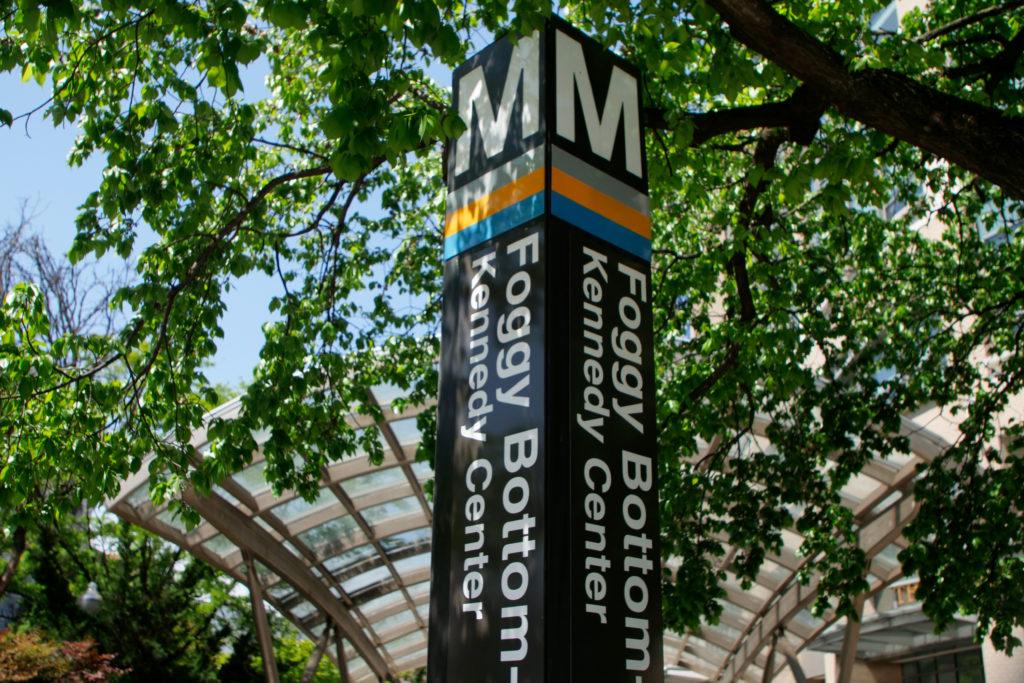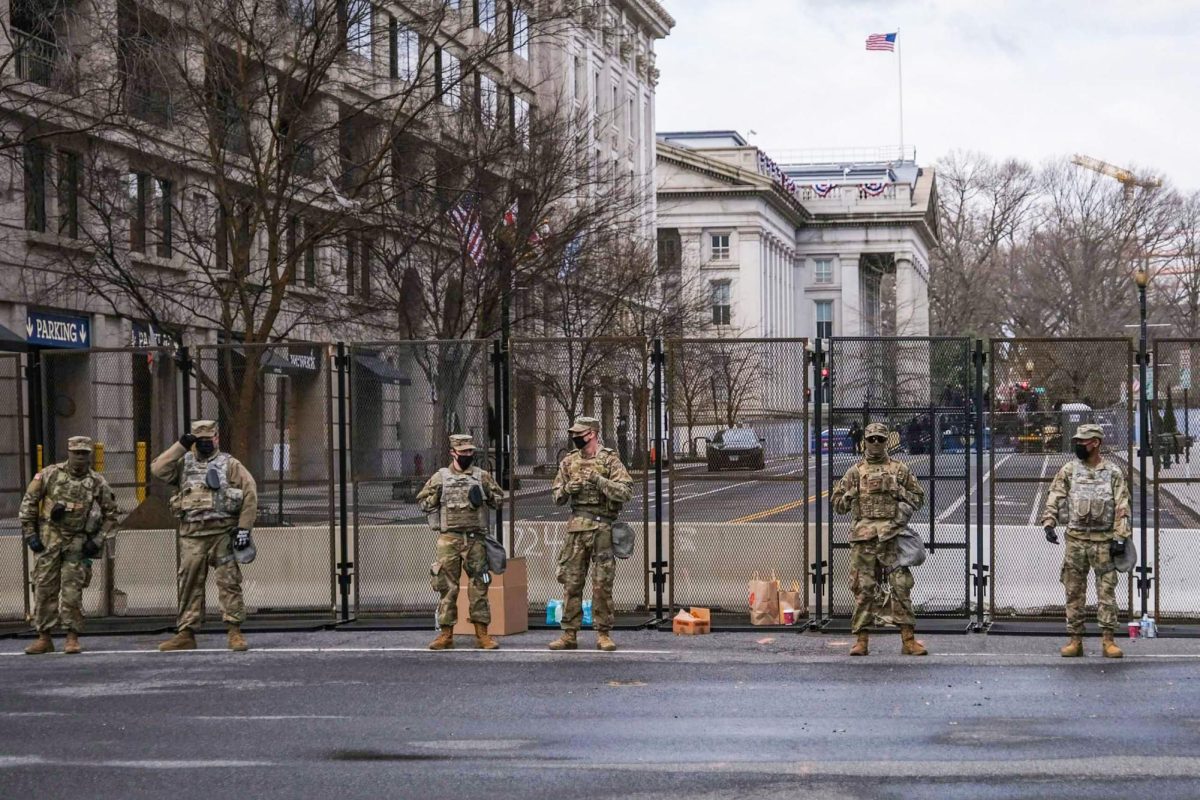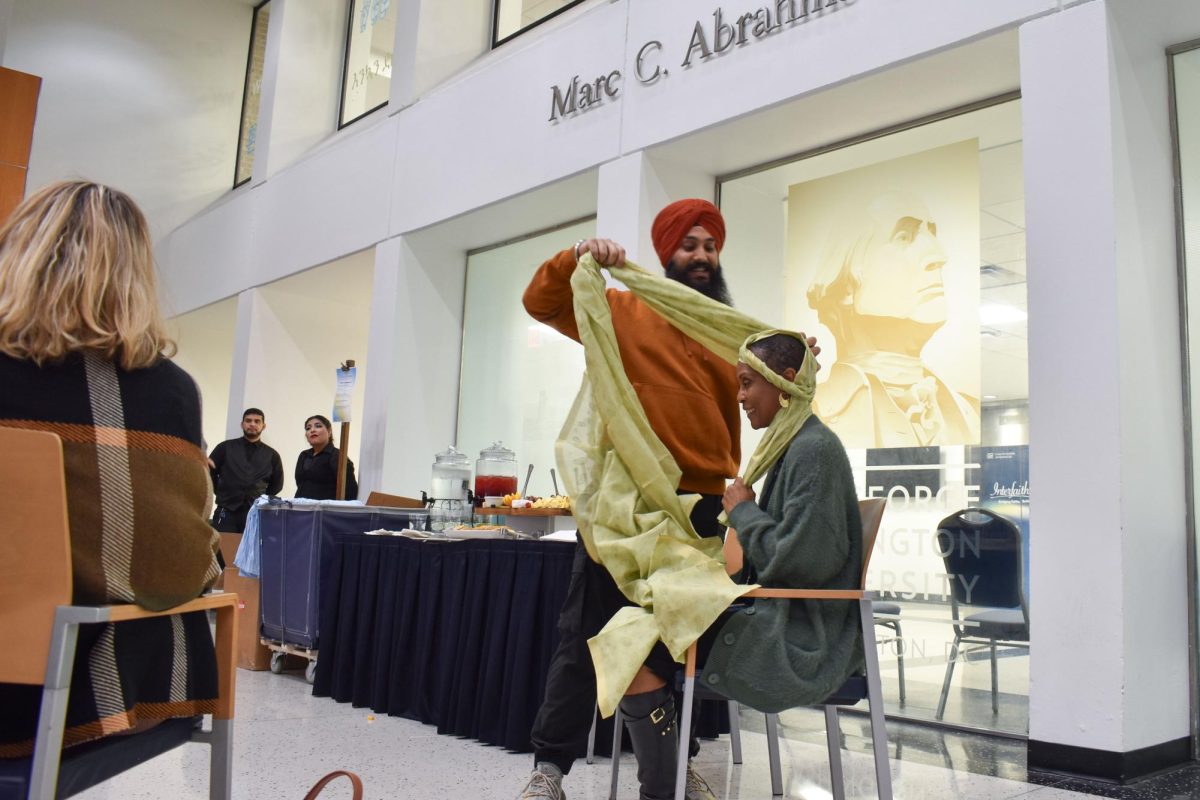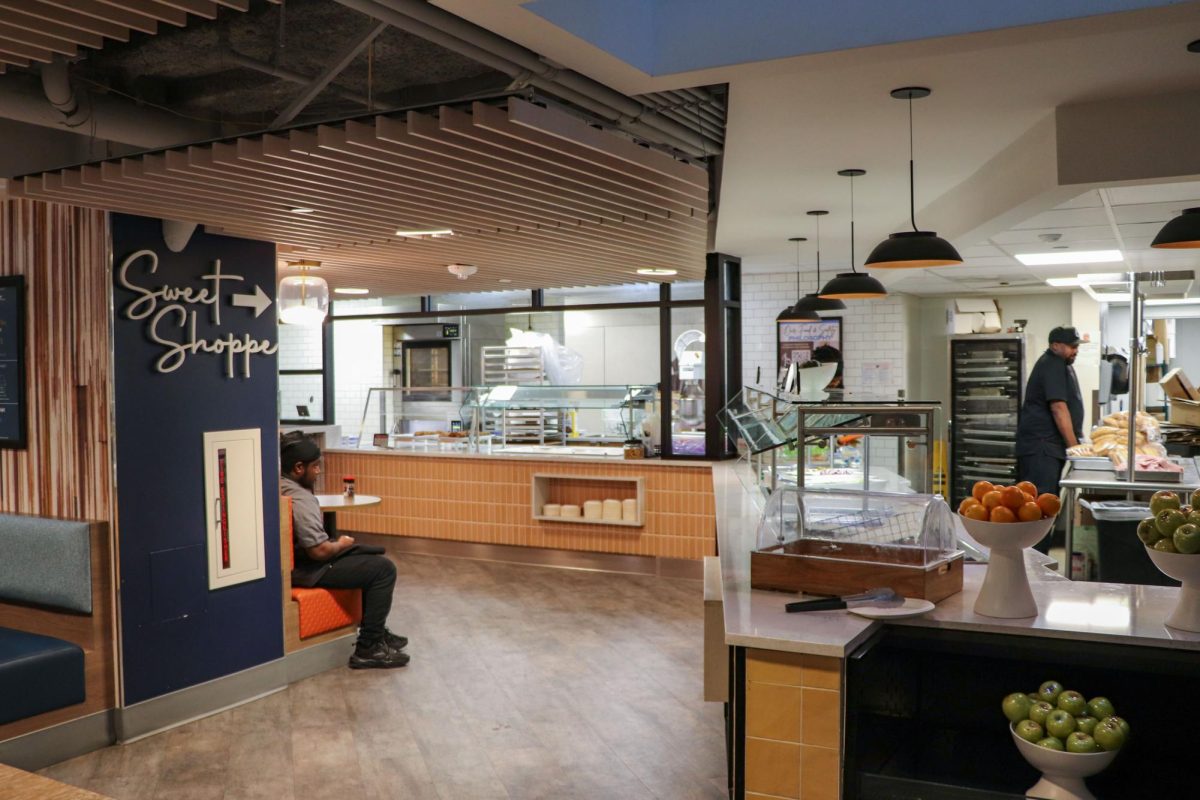Nasir Shahid has watched four decades of change at the Foggy Bottom-GWU Metro station.
Shahid, who began selling D.C.-themed merchandise in front of the station 40 years ago, said he saw the COVID-19 pandemic diminished foot traffic through the Foggy Bottom Metro station as tourists and office workers stayed home. But as pandemic-era restrictions have relaxed over the last two years, he said tourists and office workers have returned to the station, though still “15 to 20 percent” shy of the numbers he used to notice before 2020.
“When COVID first came out, I didn’t make a dime for two weeks,” Shahid said.
The number of daily riders who travel through the gates of the Foggy Bottom Metro station has risen to a nearly four-year high of 9,537 riders as of April 2023 after the figure cratered to a decade-low 4,129 average daily riders in 2021, according to Washington Metropolitan Area Transit Authority data. The current year of data marks the highest ridership levels in Foggy Bottom since 2019, when average daily ridership stood at 15,293, agency data show.
The increase in ridership makes the Foggy Bottom station the third most popular Metro station in the WMATA system including D.C., Virginia and Maryland in 2023, trailing Union Station and Metro Center, which have averaged 11,042 and 10,324 daily entries so far this year, respectively. In 2019, the Foggy Bottom station was the seventh most popular, behind Union Station, Metro Center, Gallery Place, Farragut North, L’Enfant Plaza and Farragut West.
WMATA spokesperson Tia Lewis said the increase in ridership at Foggy Bottom station is in line with the “steady growth” in total ridership across the Metro following a plummet in passengers during the pandemic. She attributed the increase in riders to the return of workers to the office and their daily routines.
Metrorail ridership has recovered from 2020’s low of 144,392 average daily passengers, creeping up to an average of 255,359 this year. Total Metro ridership has not yet reached pre-pandemic levels – peak ridership stood at an average of 506,744 in 2019.
The Foggy Bottom station receives the most ride entries at 5 p.m. with 2,180 riders on average this year and the most exits at 8 a.m. with 2,255 riders on average, according to Metro data.
She said GW has a “significant” impact on Foggy Bottom station ridership. Students took nearly 700,000 Metro rides in spring 2022, the first semester of GW’s U-Pass program, which gives students unlimited Metro access for a $100 semesterly fee. University officials implemented the U-Pass program after student leaders engaged in a yearslong advocacy campaign to adopt it.
Lewis said overall ridership has also grown as WMATA officials have reintroduced its 7000-series trains, which they temporarily pulled from the tracks after a train derailed last October. The removal delayed service, with trains departing every 30 minutes.
Metro officials have gradually returned the 7000-series trains to operation, allowing eight to enter circulation last June and all to return in October. The Washington Metrorail Safety Commission allowed WMATA to move forward with its return to service plan after its meeting last week, re-introducing all 7000-series trains.
“Transit ridership has been recovering from the pandemic across the country,” Lewis said in an email. “Metro’s ridership has grown due to increased service levels as the 7000-series trains are reintroduced, the return of workers to offices and increasing travel to special events and leisure activities.”
Ridership at the Foggy Bottom station steadily decreased ahead of the pandemic, falling from 18,099 daily riders in 2012 to 15,293 in 2019 before plummeting by more than 11,000 riders in 2020 when the pandemic hit, according to WMATA data. An internal Metro memo from May 2018 stated the declining ridership before the pandemic was likely due to service reductions after Metro officials dropped train frequency at rush hour in June 2017, extending average wait times by two minutes on five of the six Metro lines.
After the pandemic struck, WMATA officials proposed shutting down 19 stations and cutting service to create 30-minute gaps between arriving trains on weekdays in fiscal year 2022 due to massive budget cuts amid a severe ridership tumble.
Lewis said Metro’s fiscal year 2024 budget forecast indicates a “continued recovery” to pre-pandemic ridership levels on Metro trains and buses. She said Metro has not predicted an exact time when pre-pandemic ridership levels will return due to “changing regional travel patterns.”
WMATA approved its $4.8 billion budget Friday for FY 2024, setting a maximum fare cost of $6 on weekdays for long-distance trips while capping fares at $4 for riders using MetroAccess, which helps riders with disabilities access the Metro. The budget also provides a 50 percent discount for riders enrolled in the Supplemental Nutrition Assistance Program and caps weekend and late-night fares at $2.
Foggy Bottom riders and residents said the loss of local businesses and the rise of remote work during the pandemic reduced traffic through the neighborhood, but they have seen Metro ridership slowly climb back up as pandemic-era safety measures wane.
Denise Vogt, the co-chair of the history project for the Foggy Bottom Association, said the Foggy Bottom Metro station serves as a “drop-off point” for protesters coming into the National Mall from Virginia suburbs.
“That certainly wasn’t the case, I think, when the system was first set up,” she said. “But on those days when we have major events, like fireworks or the Women’s March, it’s very crowded.”
Chris Farlow, an employee at the State Department, said he came to Foggy Bottom during the pandemic after a stay overseas, and ridership through the neighborhood station has slowly increased since he first arrived. He said he primarily notices workers commuting to the GW Hospital and State Department and tourists headed toward the Lincoln Memorial and other monuments exiting at the Foggy Bottom station.
“I see tourists come through here to go to the Mall because it’s a pretty close stop for the Lincoln Memorial,” Farlow said.







